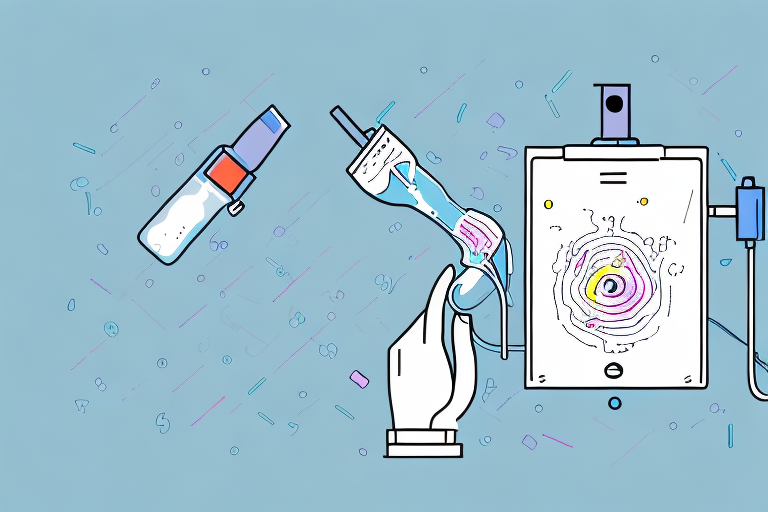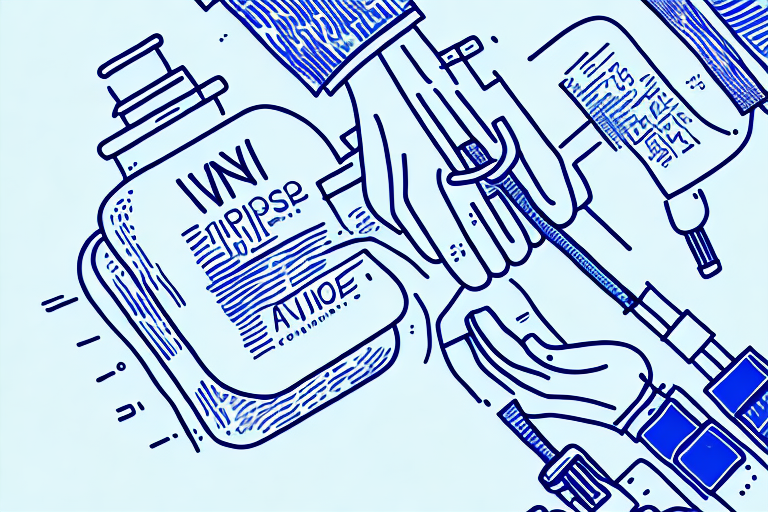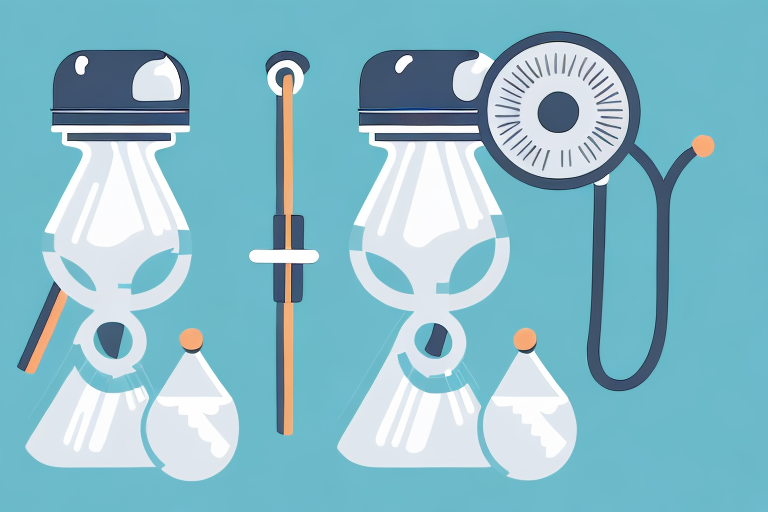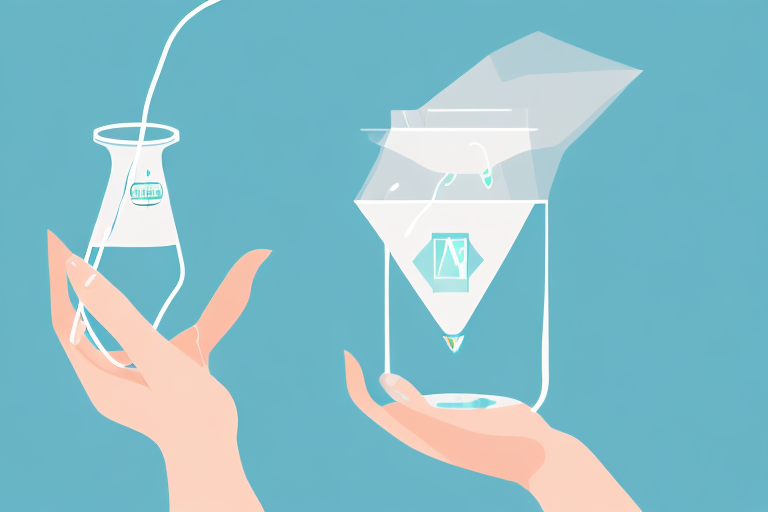Discover the Health Benefits of Amino Acid IV Therapy
If you're looking for a way to improve your health, you may have come across amino acid IV therapy. This treatment involves receiving a blend of amino acids directly into your bloodstream through an intravenous (IV) drip. Amino acid IV therapy has gained popularity among celebrities and athletes for its alleged health benefits, but you may also wonder if it's right for you. In this article, we will explore the science behind amino acid IV therapy, its potential health benefits, and how to find a qualified provider.

Understanding Amino Acids and Their Role in the Body
Before we dive into the benefits of amino acid IV therapy, let's first understand what amino acids are and what role they play in the body. Amino acids are the building blocks of protein, which is necessary for the growth and repair of our body tissues. There are 20 different types of amino acids, and our bodies can produce some of them naturally. However, we must obtain the rest through our diet or supplements.
What are Amino Acids?
Amino acids are organic compounds made up of carbon, hydrogen, oxygen, and nitrogen. They are the building blocks of proteins that make up our muscles, bones, skin, and even some hormones and enzymes. They also help transport and store nutrients in our body and play an essential role in our immune system function.
Essential vs. Non-Essential Amino Acids
There are two types of amino acids: essential and non-essential. Essential amino acids must be obtained from the diet or supplements because our bodies cannot produce them. The non-essential amino acids can be produced by our bodies, but we still need to consume them to maintain optimal health.
Functions of Amino Acids in the Body
Amino acids have various functions in the body. Some of them are essential for building and repairing tissues, while others combine to form hormones, enzymes, and neurotransmitters. Amino acids also help produce energy, support immune system function, and maintain healthy skin, hair, and nails.
One of the most important functions of amino acids is their role in muscle growth and repair. When we exercise, we create small tears in our muscle fibers. Amino acids are necessary for repairing these tears and building new muscle tissue. This is why athletes and bodybuilders often consume protein supplements to ensure they are getting enough amino acids to support their muscle growth and recovery.
Amino acids also play a crucial role in our immune system function. They help produce antibodies, which are proteins that recognize and neutralize foreign invaders in our body, such as viruses and bacteria. Without amino acids, our immune system would not be able to function properly, leaving us vulnerable to infections and diseases.
In addition to their role in muscle growth and immune system function, amino acids also help produce energy in our bodies. When we consume protein, our bodies break it down into amino acids, which can then be used to produce energy through a process called gluconeogenesis. This is especially important during times of fasting or low carbohydrate intake when our bodies need to produce glucose for energy.
Lastly, amino acids are essential for maintaining healthy skin, hair, and nails. This is because proteins such as collagen and keratin, which are necessary for the structure and health of these tissues, are made up of amino acids. Consuming enough amino acids through our diet or supplements can help improve the appearance and health of our skin, hair, and nails.
The Science Behind Amino Acid IV Therapy
Amino acid IV therapy is a medical treatment that has been gaining popularity in recent years. It involves the delivery of a blend of amino acids and other essential nutrients directly into the bloodstream, bypassing the digestive system. This results in faster and more efficient absorption of the nutrients than taking supplements orally. Additionally, IV therapy allows for higher doses of amino acids to be delivered, which can be helpful for certain health conditions.
Amino acids are the building blocks of proteins, which are essential for the growth and repair of tissues in the body. They also play a crucial role in the production of hormones, enzymes, and neurotransmitters. However, the body cannot produce all the necessary amino acids on its own, which is why they need to be obtained through diet or supplements.
How Amino Acid IV Therapy Works
During an amino acid IV therapy session, a small needle is inserted into a vein in your arm. The amino acid blend is then slowly dripped into your bloodstream over the course of 30 minutes to an hour, depending on the type of treatment you're receiving. Treatment plans may involve a series of weekly sessions or intermittent maintenance therapy, depending on your individual needs.
The amino acid blend used in IV therapy is tailored to each individual's needs, depending on their health condition and nutritional status. The blend may contain a combination of essential and non-essential amino acids, as well as other nutrients such as vitamins, minerals, and antioxidants.
The Benefits of Intravenous Delivery
IV therapy allows for a more rapid and efficient absorption of nutrients than taking supplements orally. It bypasses the digestive system, which can limit the absorption of certain nutrients. Additionally, IV therapy provides a higher concentration of amino acids to the body, which can improve their efficacy in enhancing health and wellness.
IV therapy is commonly used for conditions such as chronic fatigue syndrome, fibromyalgia, and depression. It can also be helpful for athletes who need to recover quickly from intense workouts or injuries.
Amino Acid IV Therapy vs. Oral Supplements
While oral supplements may be effective in providing amino acids, they may not be as efficient in delivering nutrients to the body. Many factors, such as digestion and other medications, may hinder the absorption of oral supplements. However, amino acid IV therapy delivers nutrients directly into the bloodstream, which ensures higher absorption rates and faster results.
It is important to note that IV therapy should only be done under the supervision of a qualified healthcare provider. While it is generally safe, there are some risks associated with the procedure, such as infection, allergic reactions, and vein irritation.
In conclusion, amino acid IV therapy is a promising treatment option for individuals who need to boost their nutrient levels quickly and efficiently. It offers numerous benefits over oral supplements, including higher absorption rates and faster results. However, it should only be done under the guidance of a qualified healthcare provider.
Key Health Benefits of Amino Acid IV Therapy
Amino acid IV therapy may have several health benefits. Some notable ones include:
Improved Muscle Recovery and Growth
Amino acids are essential for building and repairing muscle tissue. IV therapy can provide the necessary amino acids to help rebuild muscle tissue after workouts and reduce muscle soreness.
Additionally, amino acids such as leucine, isoleucine, and valine are known as branched-chain amino acids (BCAAs). These BCAAs are particularly important for muscle growth and repair as they stimulate protein synthesis and reduce muscle breakdown.
IV therapy can provide a concentrated dose of BCAAs, allowing for optimal muscle recovery and growth.
Enhanced Immune System Function
Amino acids play a crucial role in maintaining a healthy immune system. In addition to supporting white blood cell production and antibody creation, amino acids such as arginine and glutamine also have anti-inflammatory properties that can help reduce the risk of infection and illness.
IV therapy can help replenish amino acid levels and support immune function, particularly during times of high stress or illness.
Boosted Energy Levels and Metabolism
Amino acids are essential for energy production, and IV therapy can help support energy levels and metabolism. In particular, amino acids such as taurine and glutamine have been shown to improve exercise performance and reduce fatigue.
IV therapy can provide a quick and efficient way to replenish amino acid levels and support energy production, making it an ideal choice for athletes or those with busy lifestyles.
Better Cognitive Function and Mood
Amino acids are involved in the production of neurotransmitters that regulate mood and cognitive function. IV therapy can help support neurotransmitter production and improve mood, memory, and focus.
In particular, amino acids such as tyrosine and phenylalanine are precursors to dopamine, a neurotransmitter that plays a key role in regulating mood and motivation. IV therapy can provide a concentrated dose of these amino acids, helping to improve mood and cognitive function.
Overall, amino acid IV therapy can provide a range of health benefits, from improved muscle recovery and growth to enhanced immune system function and cognitive performance. Talk to your healthcare provider to see if amino acid IV therapy is right for you.
Amino Acid IV Therapy for Specific Health Conditions
Amino acid IV therapy has been gaining popularity in recent years due to its ability to provide essential nutrients to the body in a quick and efficient manner. This therapy involves administering a mixture of amino acids directly into the bloodstream through an IV. While this therapy is generally used to improve overall health and wellness, it can also be used to support specific health conditions.
Chronic Fatigue Syndrome
Chronic fatigue syndrome is a complex condition that is characterized by extreme fatigue that does not improve with rest. This condition can be debilitating and can significantly impact a person's quality of life. Amino acid IV therapy may help improve energy levels and reduce fatigue in people with chronic fatigue syndrome. Specifically, amino acids such as glutamine and arginine have been shown to improve energy levels and reduce fatigue in people with this condition.
In addition to amino acid IV therapy, there are other lifestyle changes that can help manage chronic fatigue syndrome. These include getting regular exercise, practicing stress-reducing techniques such as meditation or yoga, and getting enough quality sleep.
Fibromyalgia
Fibromyalgia is a chronic condition that is characterized by widespread pain and tenderness throughout the body. This condition can also cause fatigue, sleep disturbances, and cognitive difficulties. Amino acid IV therapy may help reduce pain and improve quality of life for people with fibromyalgia. Specifically, amino acids such as glycine and taurine have been shown to reduce pain and improve sleep quality in people with this condition.
Other lifestyle changes that can help manage fibromyalgia include getting regular exercise, practicing stress-reducing techniques, and getting enough quality sleep.
Autoimmune Disorders
Autoimmune disorders are conditions in which the body's immune system attacks its own tissues. These conditions can cause a wide range of symptoms and can be difficult to manage. Amino acids, such as glutamine and arginine, play a role in supporting immune function. IV therapy may help people with autoimmune disorders maintain a healthy immune system.
In addition to amino acid IV therapy, there are other lifestyle changes that can help manage autoimmune disorders. These include following an anti-inflammatory diet, getting regular exercise, and reducing stress.
Neurological Conditions
Neurological conditions, such as Parkinson's disease and Alzheimer's disease, can be devastating for both patients and their families. Amino acids, such as glutamate and GABA, play a role in regulating neurotransmitter function. IV therapy may help support people with neurological conditions by providing these essential amino acids.
Other lifestyle changes that can help manage neurological conditions include getting regular exercise, eating a healthy diet, and engaging in activities that stimulate the brain, such as puzzles or reading.
Overall, amino acid IV therapy can be a valuable tool in supporting specific health conditions. However, it is important to remember that this therapy should be used in conjunction with other lifestyle changes and under the guidance of a qualified healthcare professional.
What to Expect During an Amino Acid IV Therapy Session
Preparing for Your Appointment
Before your appointment, it's important to inform your healthcare provider of any medical conditions or allergies you may have. This will help them determine if amino acid IV therapy is a safe and effective treatment option for you. Additionally, you should eat a small meal and hydrate well before your appointment to avoid any discomfort during the IV therapy session.
It's also important to note that amino acid IV therapy is not a substitute for a healthy diet and lifestyle. While it can provide a boost of essential amino acids, it's important to continue to eat a balanced diet and exercise regularly to maintain overall health.
The IV Therapy Process
During the session, a small needle will be inserted into a vein in your arm. It's common to feel a slight pinch or discomfort during the insertion of the needle, but this should only last for a few seconds. Once the needle is in place, the amino acid blend will be slowly dripped into your bloodstream over the course of 30 minutes to an hour.
It's important to stay relaxed and comfortable during the session to allow the amino acids to be absorbed properly. Some people choose to bring a book, listen to music, or simply close their eyes and rest during the session.
It's also worth noting that while amino acid IV therapy is generally safe and well-tolerated, there is a small risk of complications such as infection, bleeding, or allergic reactions. Your healthcare provider will monitor you closely during the session to ensure your safety.
Post-Therapy Care and Maintenance
After the session, it's essential to stay hydrated to help flush out any toxins from your body. This can be done by drinking plenty of water and electrolyte-rich fluids such as coconut water or sports drinks. You may also experience increased urination as your body eliminates the excess amino acids.
In some cases, you may need to schedule regular maintenance therapy sessions to maintain optimal results. Your healthcare provider will work with you to determine the best course of treatment based on your individual needs and goals.
Overall, amino acid IV therapy can be a safe and effective way to boost your body's levels of essential amino acids. By preparing properly, staying relaxed during the session, and following post-therapy care guidelines, you can help ensure a successful and beneficial treatment experience.
Potential Side Effects and Risks of Amino Acid IV Therapy
Amino acid IV therapy has become increasingly popular in recent years as a way to improve overall health and wellbeing. The therapy involves the infusion of amino acids directly into the bloodstream, bypassing the digestive system and allowing for faster absorption. While amino acid IV therapy is generally considered safe, there are some potential side effects and risks to be aware of.
Common Side Effects
Some people may experience mild discomfort or redness at the injection site. This is a normal reaction and should subside within a few hours. Additionally, you may experience headaches, nausea, or dizziness after the session. These symptoms typically resolve on their own within a few hours.
It's important to stay hydrated before and after the therapy session to help minimize these common side effects. Drinking plenty of water can also help flush out any toxins that may be released during the therapy.
Serious Complications and Contraindications
While amino acid IV therapy is generally safe, there are some serious complications that can occur in rare cases. These include blood clots, infections, or allergic reactions. It's essential to speak with your healthcare provider before starting IV therapy to ensure that it's safe for you.
If you have a history of blood clots or are currently taking blood thinners, you may not be a good candidate for amino acid IV therapy. Additionally, if you have a weakened immune system or are currently undergoing chemotherapy, you should speak with your healthcare provider before starting IV therapy.
How to Minimize Risks and Ensure Safety
To minimize the risk of complications, it's important only to receive IV therapy from qualified and reputable providers. Make sure that the provider is licensed and has experience administering IV therapy.
Additionally, inform your healthcare provider of any medical conditions or allergies you may have before starting IV therapy. This will help ensure that the therapy is safe for you and that any necessary precautions are taken.
If you experience any unusual symptoms after the therapy session, such as fever, chills, or severe pain, seek medical attention immediately. These symptoms could be a sign of a serious complication and should not be ignored.
Overall, amino acid IV therapy can be a safe and effective way to improve your overall health and wellbeing. By understanding the potential risks and taking necessary precautions, you can ensure a safe and successful therapy session.
Finding a Qualified Amino Acid IV Therapy Provider
IV therapy has become a popular treatment option for a variety of health concerns, from dehydration to chronic fatigue syndrome. However, it's crucial to find a qualified provider to ensure safe and effective treatment.
Credentials to Look For
When selecting a provider for IV therapy, it's essential to look for credentials such as a registered nurse or healthcare provider who has specialized training in administering IV therapy. These professionals have the necessary knowledge and skills to ensure that the treatment is administered correctly and that any potential complications are addressed promptly.
It's also important to consider the provider's experience with IV therapy. Providers who have been administering IV therapy for a longer time are likely to have encountered a wider range of situations and are better equipped to handle any issues that may arise during treatment.
Questions to Ask Before Starting Treatment
Before starting IV therapy, it's important to ask your healthcare provider about their experience with IV therapy and possible side effects. Additionally, you should discuss any medications or supplements you're taking and how they could interact with IV therapy.
It's also a good idea to ask about the specific amino acid blend that will be used in the IV therapy. Different blends can be used to target different health concerns, so it's important to ensure that the blend being used is appropriate for your needs.
Costs and Insurance Coverage Considerations
IV therapy sessions can vary in price, depending on the provider and location. Some providers may also offer package deals or discounts for multiple sessions.
It's important to note that most insurance plans do not cover the cost of IV therapy, so it's essential to consider this if you are planning on receiving this treatment. However, some providers may offer financing options or payment plans to make the treatment more affordable.
Overall, finding a qualified provider for amino acid IV therapy is crucial for ensuring safe and effective treatment. By asking the right questions and considering the costs and insurance coverage, you can make an informed decision about whether this treatment is right for you.
Final Thoughts
Amino acid IV therapy may offer various potential health benefits for people with certain conditions or people who want to improve their health and well-being. However, it's crucial to speak with a healthcare provider before starting this treatment and ensure that you are receiving IV therapy from a qualified and reputable provider. By doing so, you can help ensure that you are receiving safe and effective treatment.
© 2024 IV Fluids | All Rights Reserved | Powered By OMG Marketing











